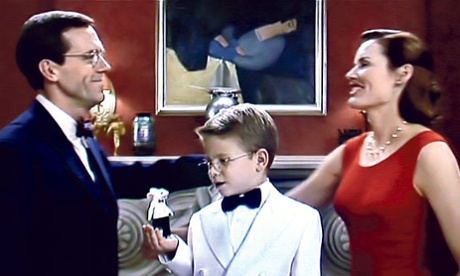
A long-lost avant garde painting has returned to Hungary after nine decades thanks to a sharp-eyed art historian, who spotted it being used as a prop in the Hollywood film Stuart Little.
Gergely Barki, 43, a researcher at Hungary’s national gallery in Budapest, noticed Sleeping Lady with Black Vase by Róbert Berény as he watched television with his daughter Lola in 2009.
“I couldn’t believe my eyes when I saw Bereny’s long-lost masterpiece on the wall behind Hugh Laurie. I nearly dropped Lola from my lap,” said Barki. “A researcher can never take his eyes off the job, even when watching Christmas movies at home.”
The painting disappeared in the 1920s, but Barki recognised it immediately even though he had only seen a faded black-and-white photo from an exhibition in 1928.
He sent a flurry of emails to staff at the film’s makers, Sony Pictures and Columbia Pictures, and received a reply from a former set designer on the film – two years later.
“She said the picture had been hanging on her wall,” Barki said.
“She had snapped it up for next to nothing in an antiques shop in Pasadena, California, thinking its avant garde elegance was perfect for Stuart Little’s living room.”
After leaving Sony, she sold the painting to a private collector who has now brought the picture to Budapest for sale by auction.
Berény, the leader of a pre-first world war avant garde movement called the Group of Eights, fled to Berlin in 1920 after designing recruitment posters for Hungary’s short-lived communist revolution in 1919.
In the German capital, he had a romance with the actor Marlene Dietrich, and – according to Barki – is also rumoured to have had a fling with Anastasia, the mysterious daughter of Russia’s last tsar, Nicholas II.
Berény’s painting will be sold on 13 December, with a starting price of around €110,000 (£87,000), staff at the Virag Judit auction house said.
According to Barki, the buyer at the 1928 exhibition, who was possibly Jewish, is likely to have left Hungary before or during the second world war.
“After the wars, revolutions and tumult of the 20th century, many Hungarian masterpieces are lost, scattered around the world,” he said.

